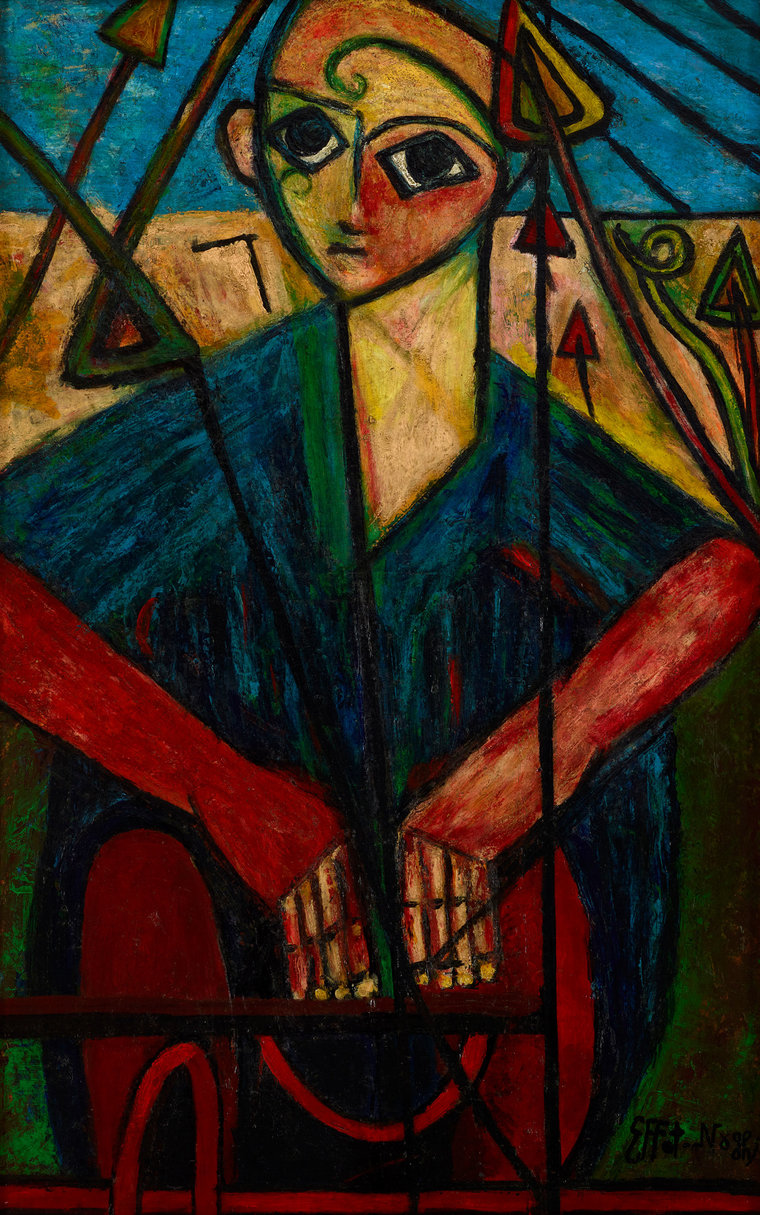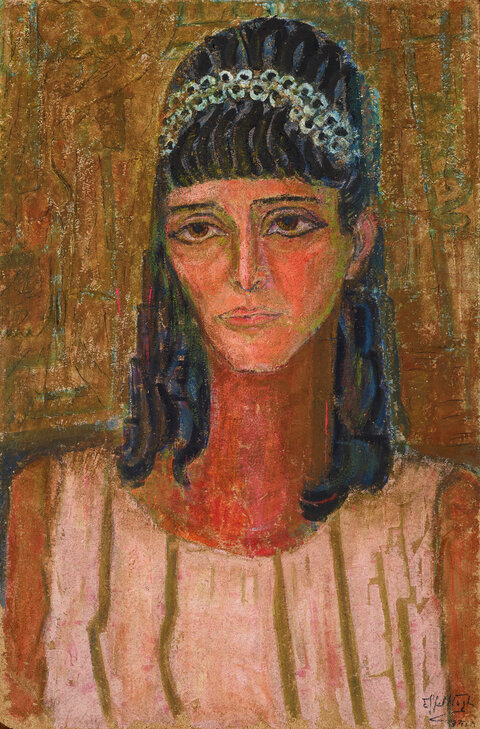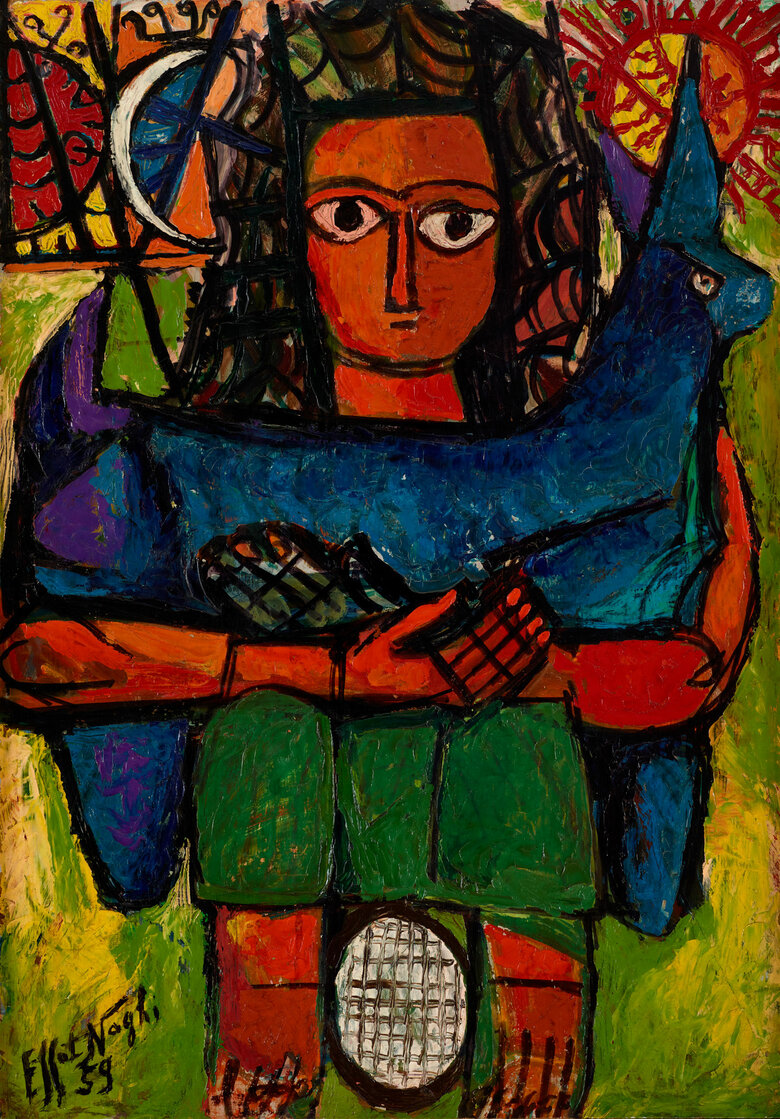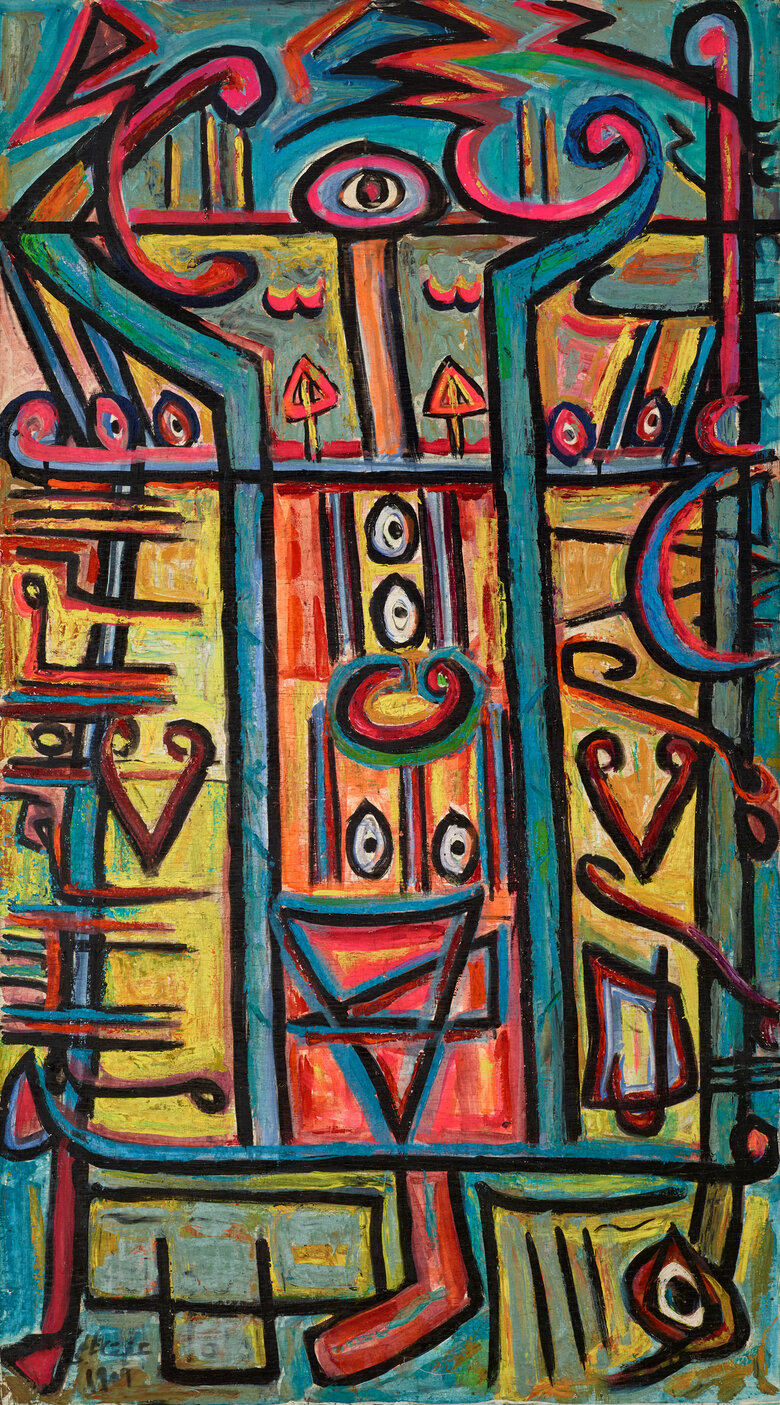Egyptian artist Effat Naghi’s Untitled, n.d., showcases her foray into the stylistic aspects of her exploration of ancient Egyptian visual culture. The painting depicts a seated figure with exaggerated angular features and large black rimmed eyes drawn in the Egyptian Coptic style. The background shows the desert and above it, beyond the horizon, the blue sky. The figure’s head is surrounded by geometric shapes that look like leaves or arrows, some of which seem to extend beyond the canvas. The colors are intense, especially the dark blue of his jalabiya with tinges of green near the collar, and the deep red of his sleeves and legs – colors which are also dispersed throughout the painting including the red on the right side of his face, the green contours of the geometric shapes, etc. This piece is an example of the modernist explorations unfolding in mid-twentieth-century Egypt, and shows Naghi’s experimentation with form and perspective, a result of the influences she encountered throughout her artistic evolution.
An important influence on Naghi’s artistic practice is the encounter she had with French painter and teacher André Lhote, when she attended his Académie in Paris between 1947 and 1950. Her belonging to a wealthy family afforded her privileges such as opportunities for development beyond her Egyptian surroundings. Her brother, renowned artist Mohamad Naghi, was a key figure in Egyptian modernism and a member of the Pioneers (Al-Ruwwad Movement) – a post-independence art movement advocating for developing uniquely Egyptian art rooted in the culture’s heritage and recent archeological findings. Effat was very close to her brother and, as a young woman, sought his opinion and approval regarding her artistic endeavors. She also traveled extensively across Europe in her early years, and received a scholarship to study in Italy. Through her brother, she met André Lhote, whose theories and philosophy on art, especially in relation to fauvism and cubism, are reflected in Naghi’s own process: the organization of the geometrical space on the canvas, the shape and construction of the figure, and the gradation of colors as they move between the bright blue of the sky, to the soft brown of the desert backdrop, then to the dark blue followed by warm red of the figure’s garments.
In addition to the influence of her brother and other international artists, Naghi’s husband left a profound impact on her artistic choices. Naghi married Saad Al-Khadem in 1954, who was a researcher, historian, social anthropologist, and painter as well as her teacher. Naghi was passionate about archeology and exploring the history of Egyptian heritage, and would help her husband with his research on Egyptian folklore and traditions. Through his influence and their adventures as they uncovered their culture’s history, Naghi’s subject matter and style began to shift as she incorporated these motifs into her works. This work shows the many threads of influence that have guided Effat Naghi’s development, and how they came together to shape her unique visual language.
Signed in Arabic, signed 'EFFAT NAGHI' on the lower left front










